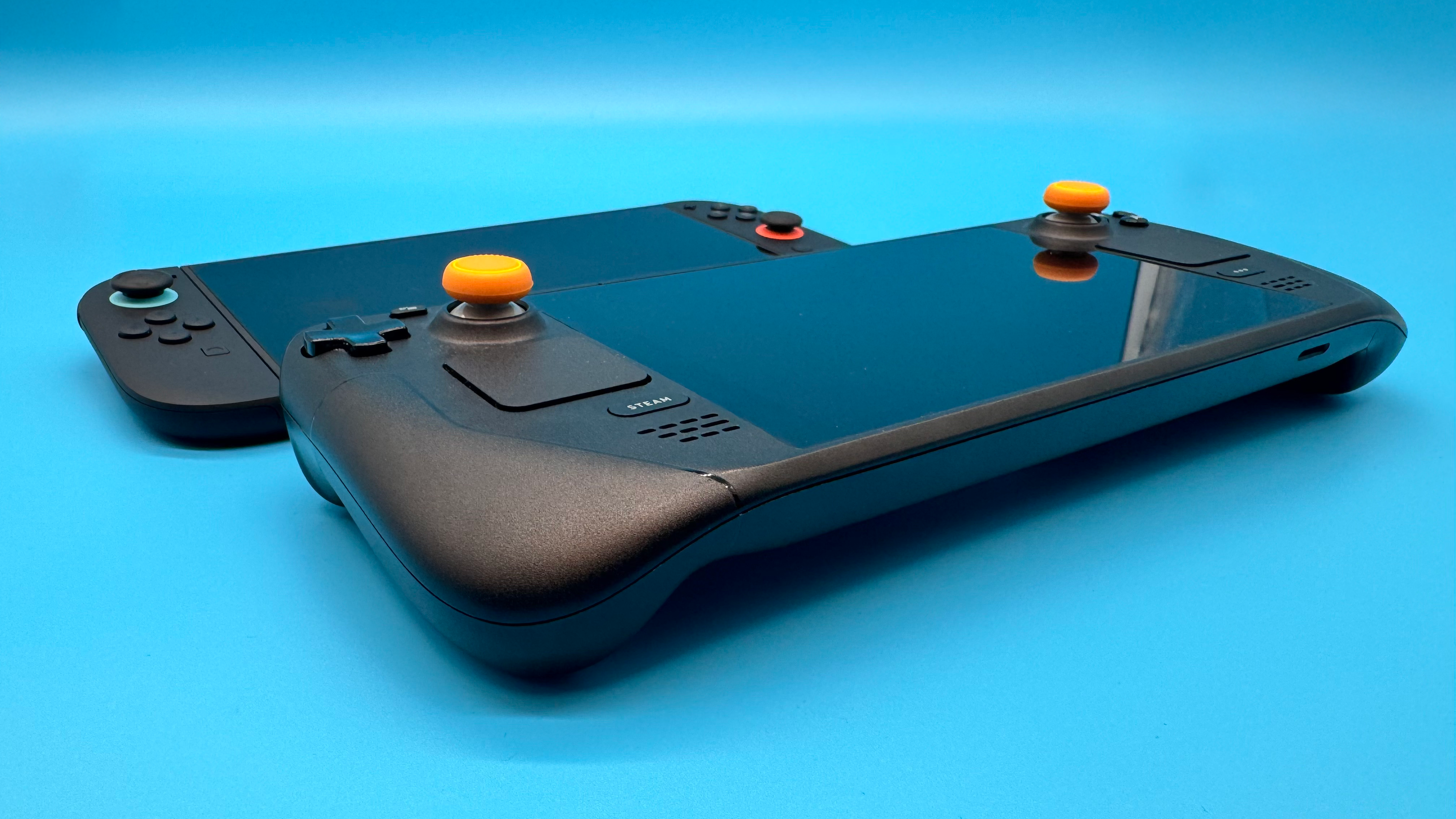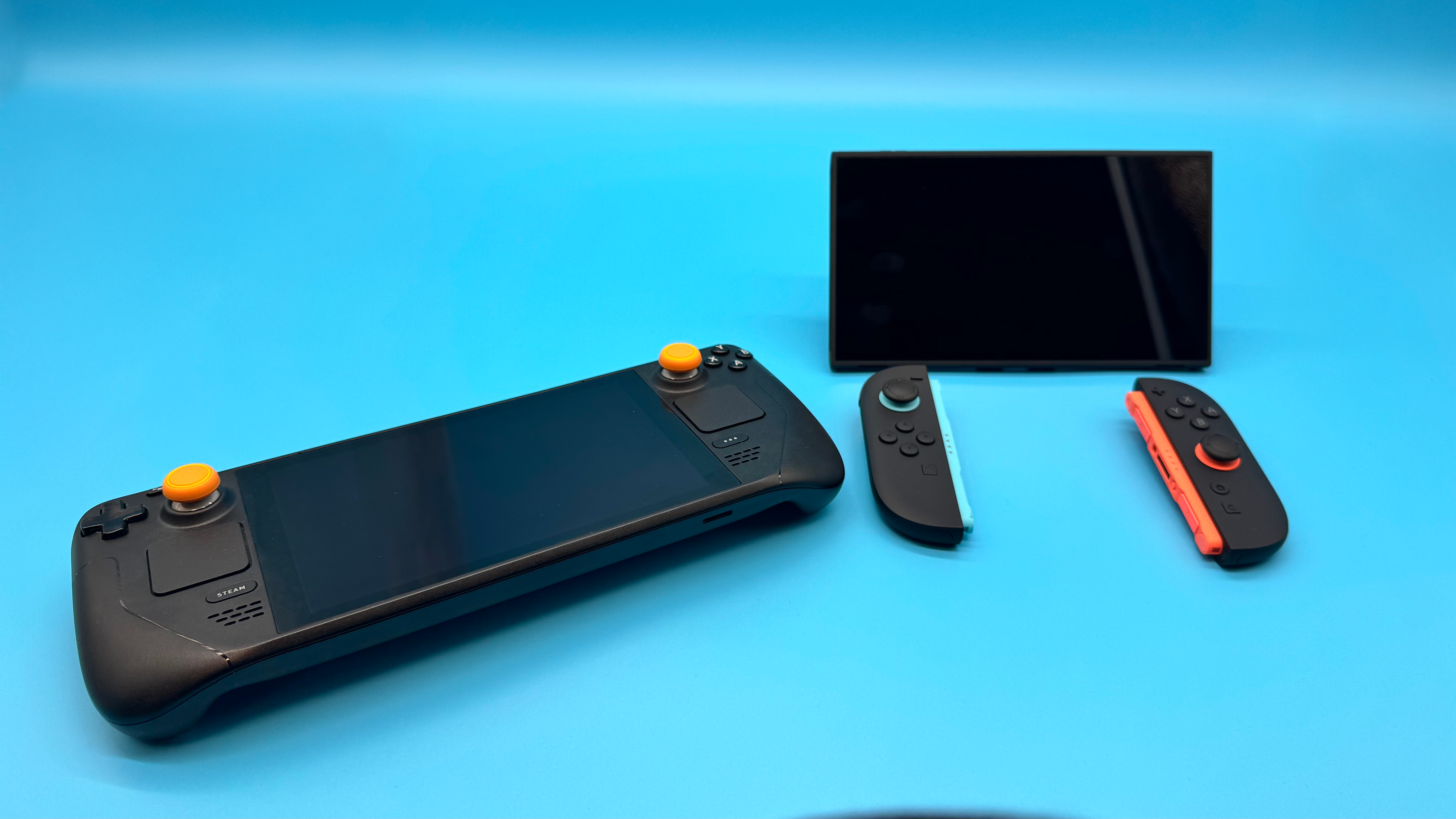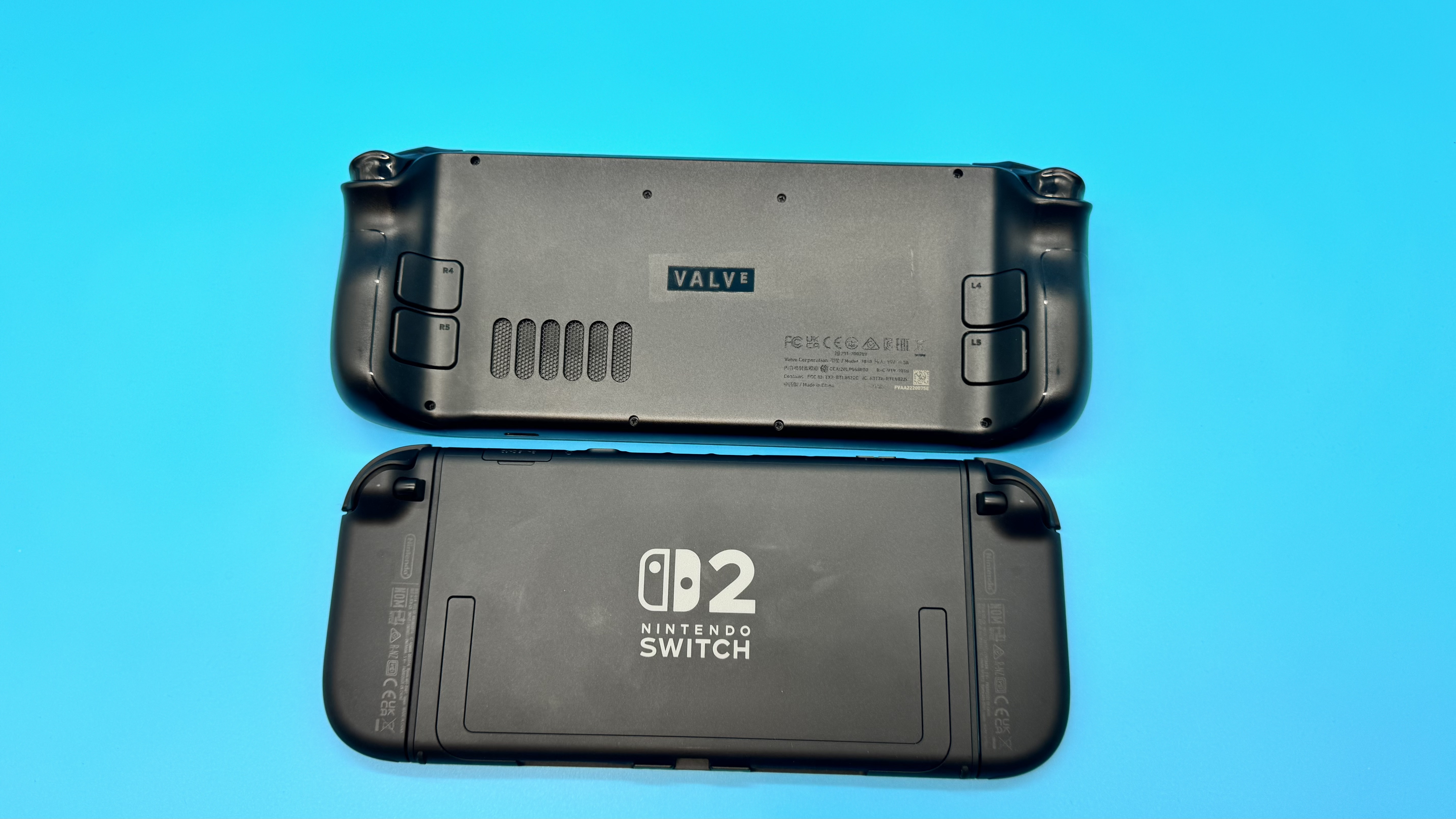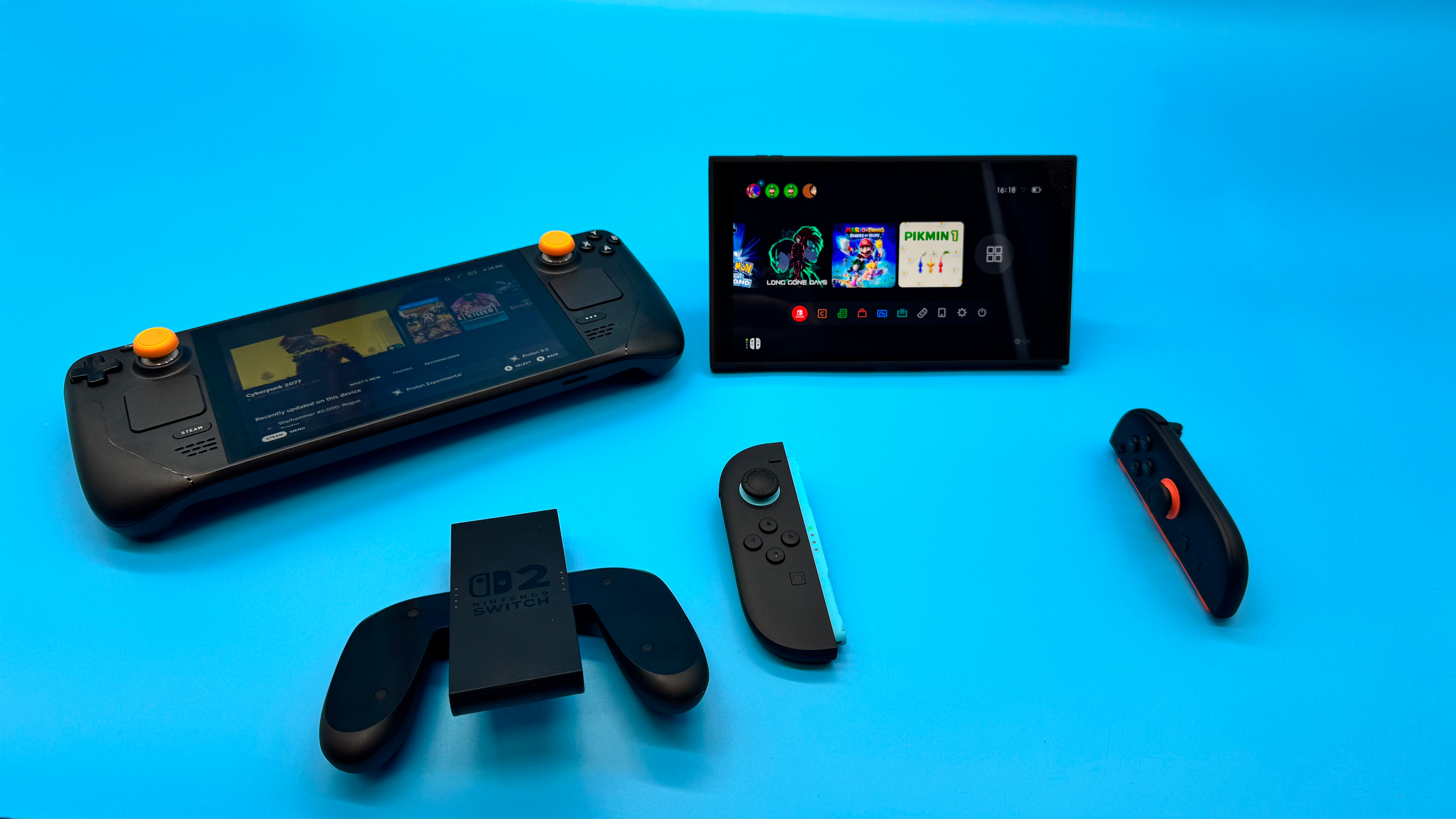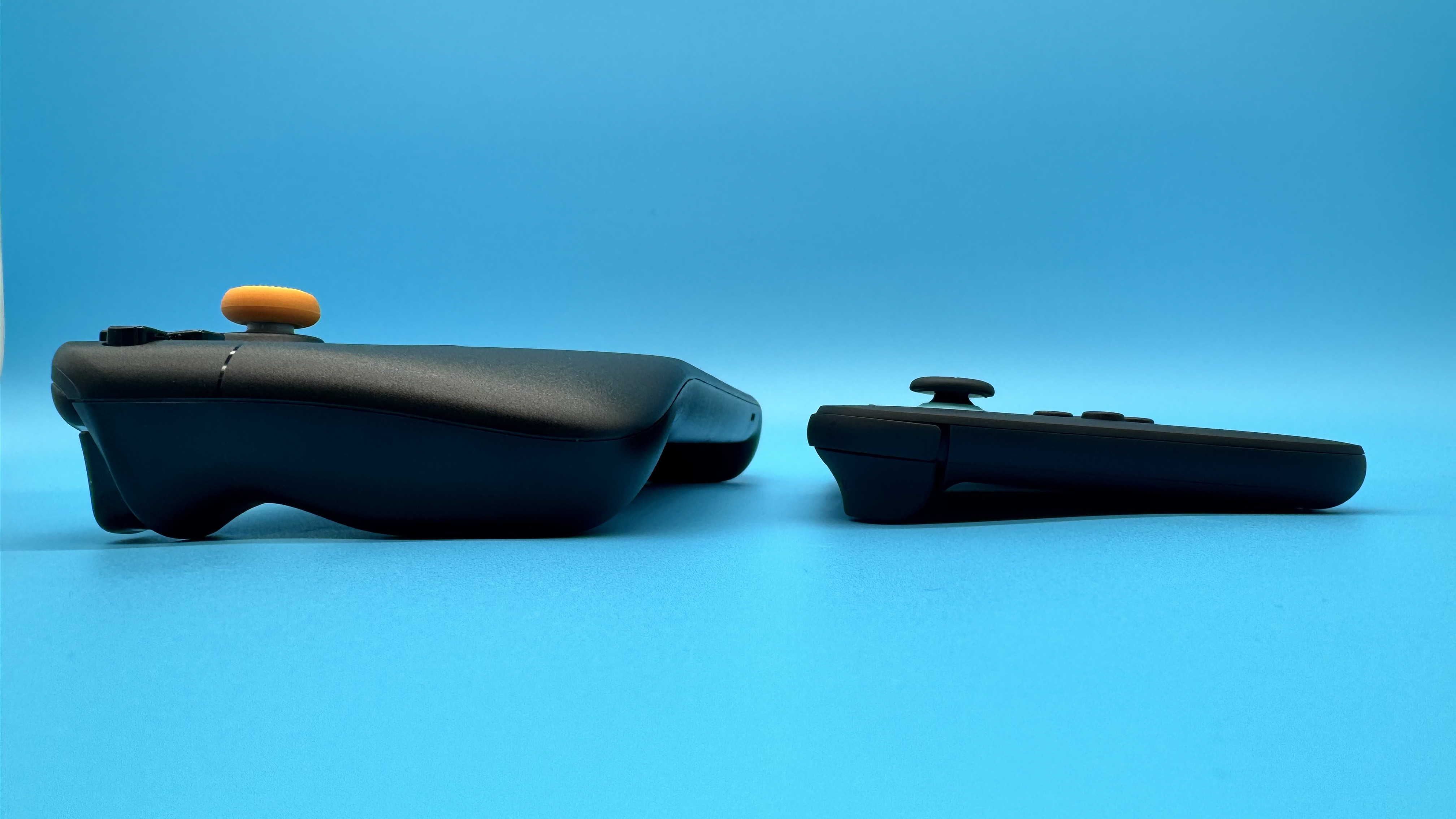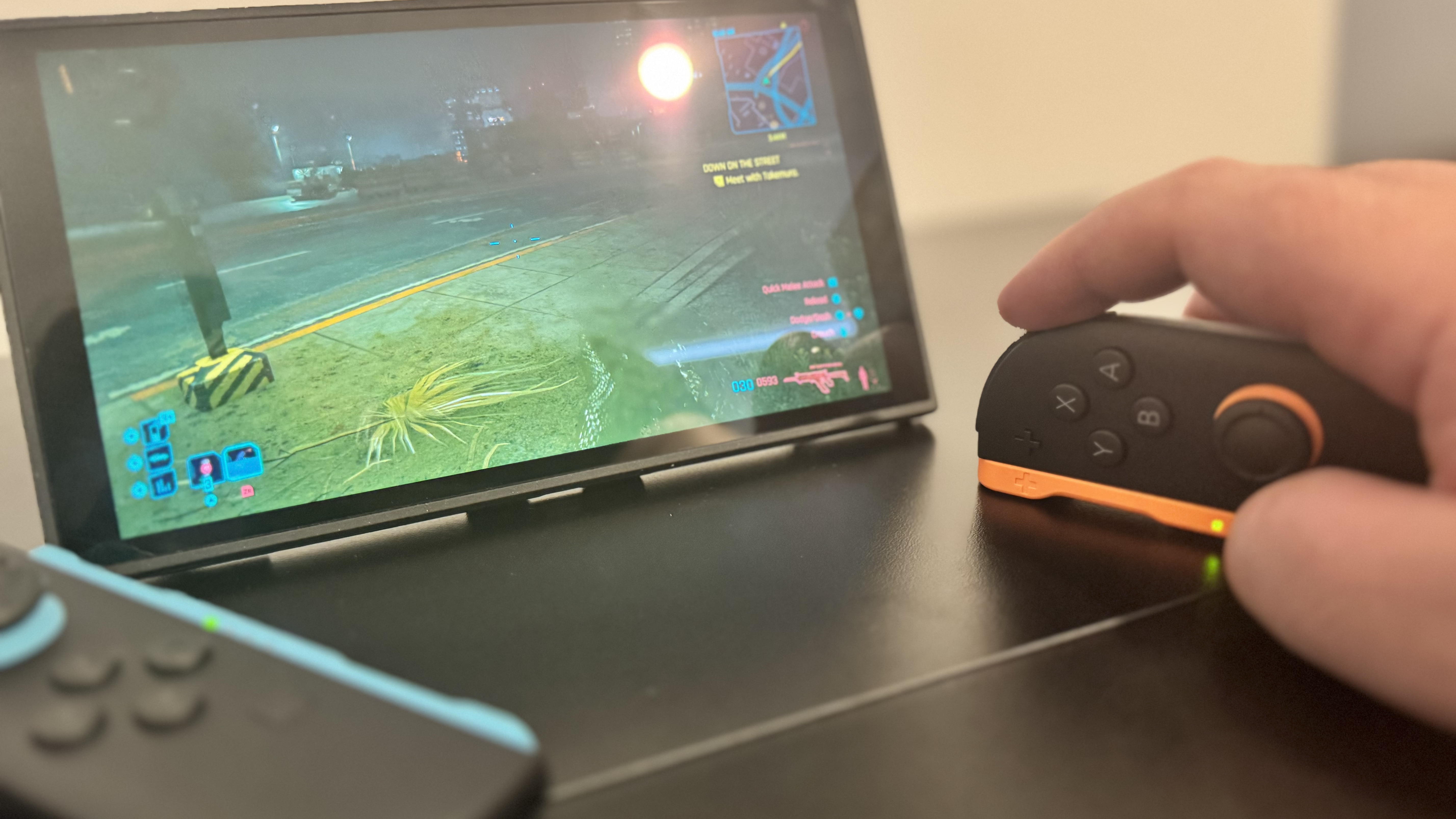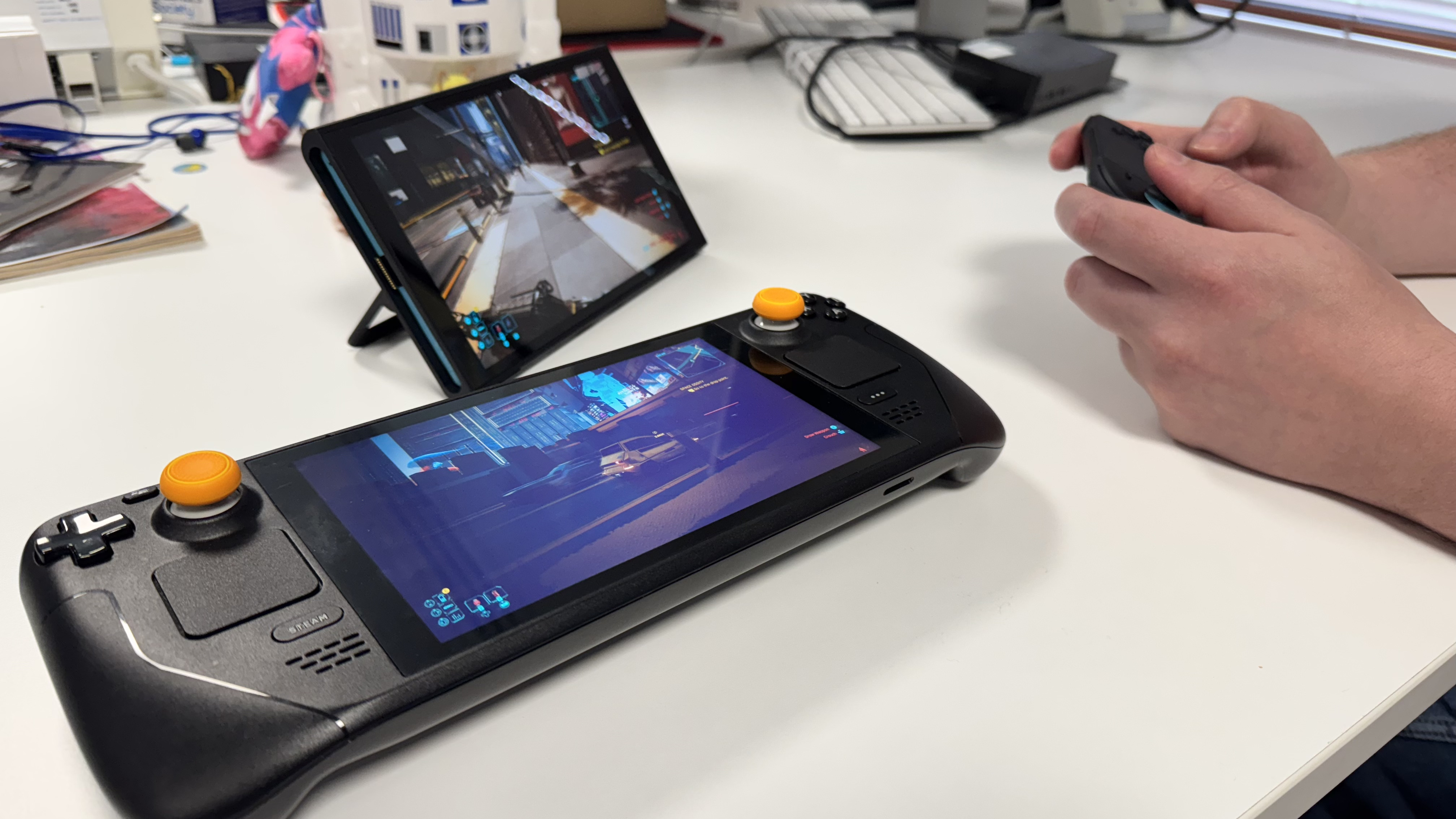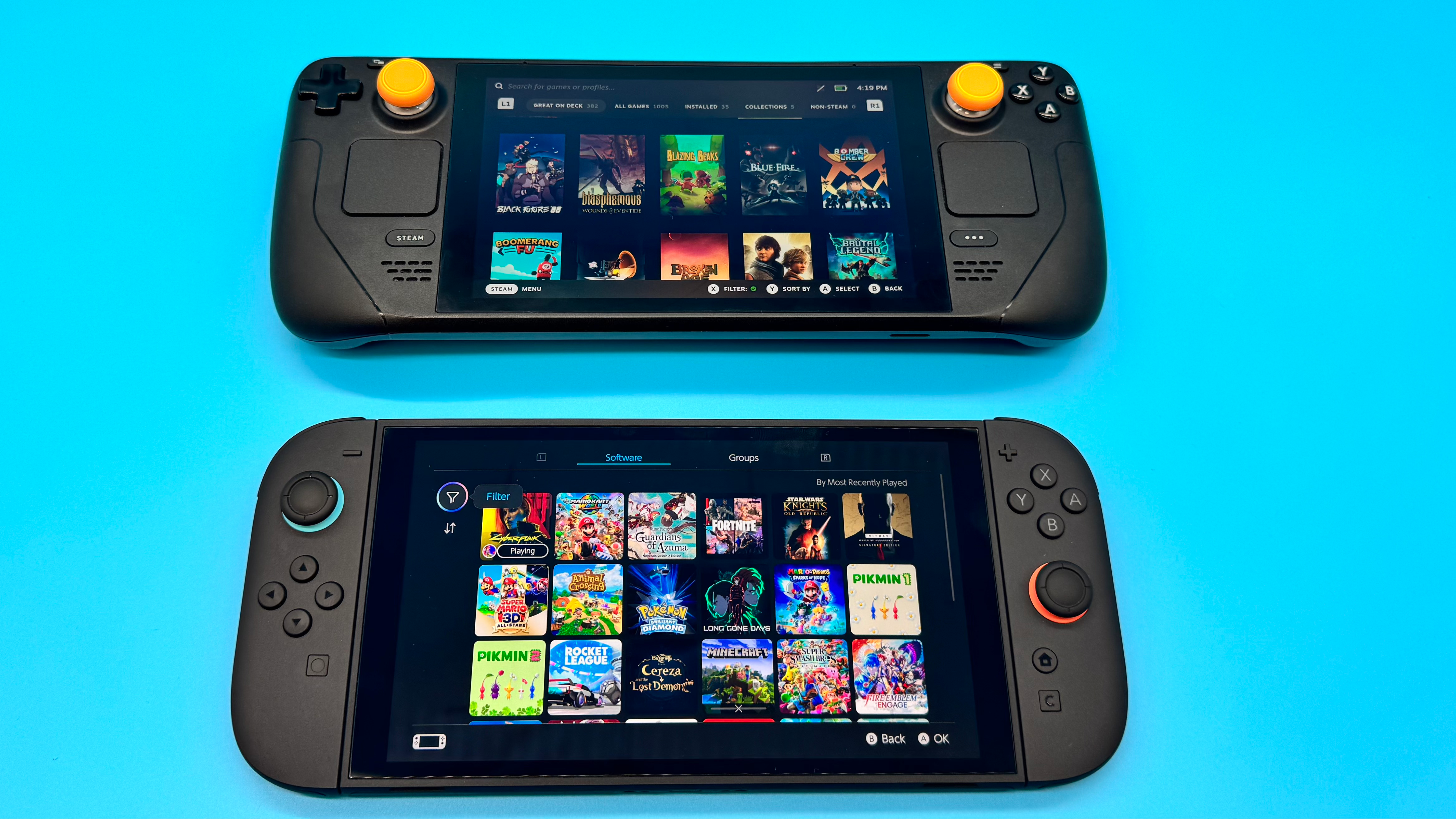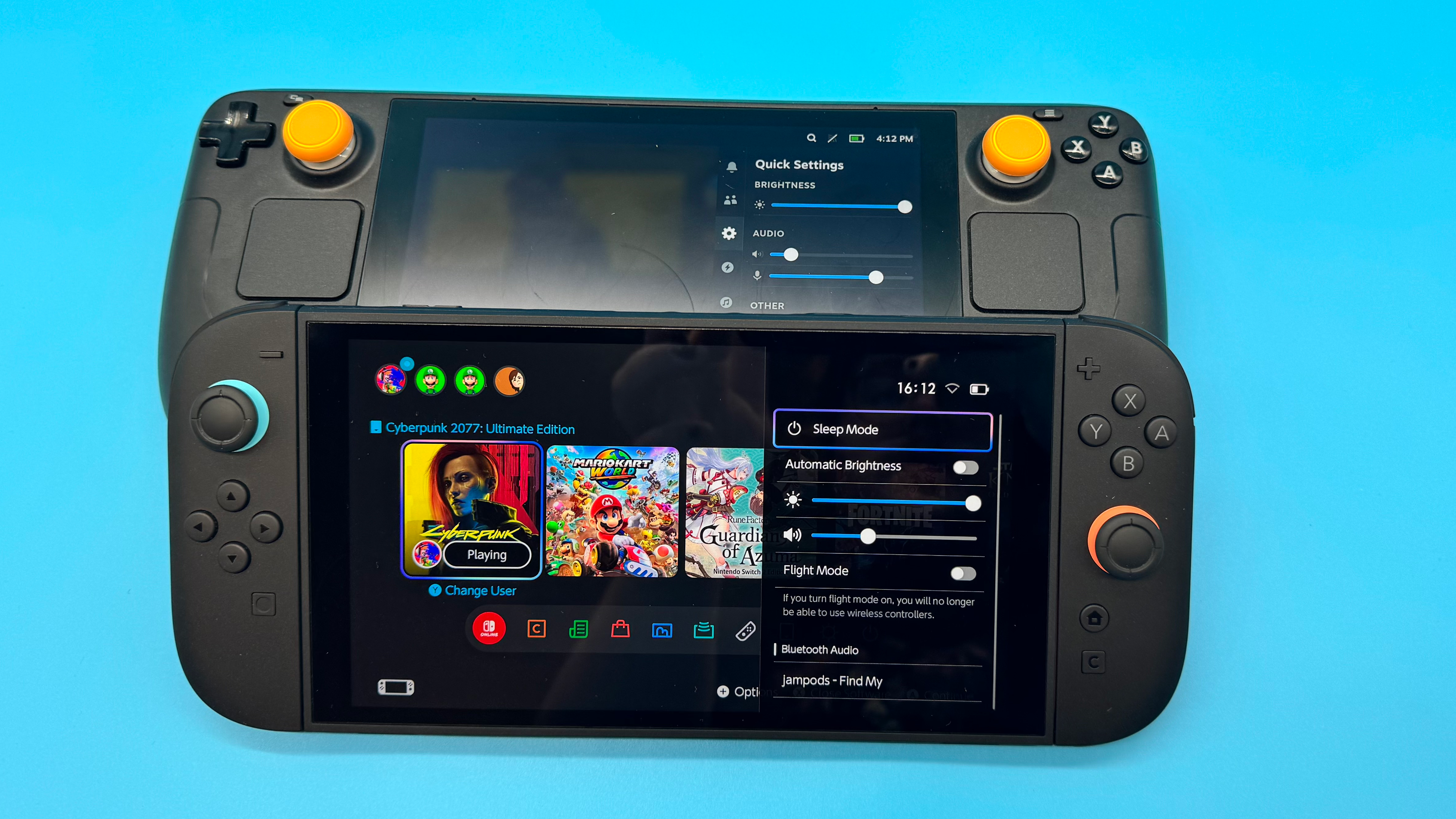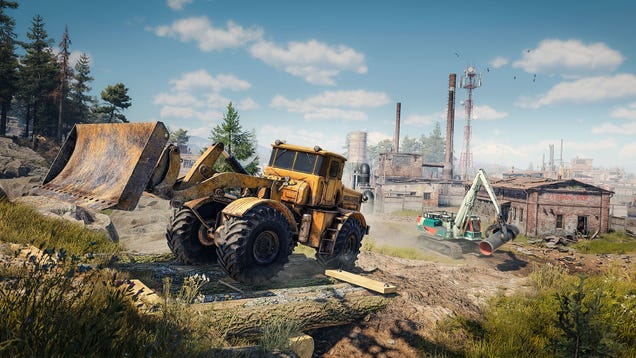
Is it time to make a switch? That might depend on where your game library lives.
Pitting the Steam Deck against the Nintendo Switch 2 feels like a very different competition than pitting the Deck against the Switch 2’s predecessor. Now, Nintendo’s choice is the more expensive, more recent option, and it oddly feels like a bit of an underdog.
The Nintendo Switch was a small revelation when it first dropped onto the market in 2017. Combining the best parts of the (let’s be real) highly flawed Wii U, and mixing it with the mass appeal of the Nintendo DS, it was one of the first times you could have a decent console-level experience on the go. That even made sense for PC gamers at the time, who had few good ways to play games out and about.
However, in the years since, that market has become bigger and bigger, with the advent of portable PCs and their subsequent perfecting to the best handheld gaming PCs today. Being good enough isn’t enough to win people’s hard-earned cash, especially when the opportunity cost is just so much higher.
The Nintendo Switch 2 is bigger than before, it’s sleeker and more powerful, but ultimately, is it a better way to spend your money when the Steam Deck is still such a viable handheld? Well, the answer is a tad more complicated than just yes or no.
Steam Deck vs Nintendo Switch 2: Price
- The Steam Deck’s MSRP is better, and its age means you never need to actually pick it up at full price
The models I will be comparing are the base Nintendo Switch 2 and the LCD Steam Deck, which is the cheapest version of the Deck.
I do this as theses two models are most similar in price, and I’d probably hold out for a sale on a Lenovo Legion Go or Asus ROG Ally X once you get to the $550/$650 that the Steam Deck OLED will cost you.
The Steam Deck is the best budget handheld gaming PC right now, and I think the most comparable to the Nintendo Switch 2. They’re both the newest entry-level devices from their respective companies.
The Nintendo Switch 2 will set you back $450 right now, and the Steam Deck will cost you $399, for the 256 GB model.
The Steam Deck has dipped down to as low as $300 but has regularly sold for $350. Unfortunately we haven’t seen a sale on the device since December last year, but we anticipate it won’t stay at full price for too long.
If you can hold out, it is likely you will be able to pick up a Steam Deck for $100 below the cost of the Nintendo Switch 2, which, given its newness and Nintendo-ness, likely won’t see any substantial sales for some time.
Nintendo Switch 2 vs Steam Deck: Specs
|
Steam Deck (256 GB LCD) |
Nintendo Switch 2 |
|
|
APU |
AMD Aerith |
Nvidia T239 |
|
Process |
7 nm |
8 nm |
|
Cores |
4 |
8 |
|
CPU architecture |
AMD Zen 2 |
ARM Cortex-A78C |
|
CPU clock speed |
2.4–3.5 GHz |
998 MHz (docked) / 1.1 GHz (handheld) |
|
Memory |
16 GB LPDDR5 |
12 GB LPDDR5X |
|
GPU architecture |
AMD RDNA 2 |
Ampere |
|
GPU clock speed |
1-1.6 GHz |
1007 MHz (docked) / 561 MHz (handheld) |
|
Storage |
256 GB SSD(supports microSD card) |
256 GB UFS(supports Express microSD card) |
|
Weight |
669 g |
534 g |
|
Screen |
7-inch LCD |
7.9-inch LCD |
|
Resolution (handheld) |
1280 x 800 |
1920 x 1080 |
|
Resolution (docked) |
3840 x 2160 |
3840 x 2160 |
|
Refresh rate |
60 Hz |
120 Hz |
|
Battery |
5,200 mAh |
5,220 mAh |
|
Wi-Fi |
Wi-Fi 5 |
Wi-Fi 6 |
|
Price |
$399 |
$450 |
The Nintendo Switch 2 uses an Nvidia chip, whereas the Steam Deck is built with AMD. Both chips are built on different architectures and are semi-custom, so straight comparisons are a little hard to fully contextualise.
The T239 chip present in the Nintendo Switch 2 uses ARM Cortex-A78C cores and has 1,536 CUDA cores and offers GPU clocks of 1,008 MHz in docked and 561 MHz in handheld mode, with the CPU clocks being 998 MHz docked and 1.1 GHz in handheld.
Steam Deck’s hardware, on the other hand, offers four Zen 2 cores, with a clock speed between 2.4-3.5 GHz, and an RDNA 2-based GPU with 512 shader cores and clock speeds between 1-1.6 GHz.
The Steam Deck’s x86-based processor makes it a great handheld PC, thanks to compatibility with a range of software. This is one of the finer points that differentiates a handheld console from a handheld PC.
Given that we are comparing an Arm chip (Switch 2) to an x86 one (Steam Deck), raw power isn’t everything. How well things run will be a mixture of the hardware itself and how it is optimised for machines. And the Switch 2 being Arm-based does limit what can be done with it, in terms of the games it can run, for instance, but it is a boon to efficiency.
While the different CPU architectures can have an impact on software, so can the different GPUs. For instance, we have DLSS for the Nintendo Switch 2 and FSR for Steam Deck. Games like Cyberpunk 2077 have DLSS automatically on for Switch 2, without much say in the matter. This is just another layer that makes the performance of games quite different from what raw specs may lead you to believe.
DLSS and FSR are effectively the same thing: a technology to upscale games, with the latter being Nvidia’s tech and the former being AMD’s. This is done to offer better visuals whilst preserving the same performance. A game will run at a lower resolution and then upscale to a higher one, in order to achieve a better frame rate or general look. Traditionally, DLSS has been the better of the two technologies but AMD has caught up over the last few years. Where Steam Deck games may come with an FSR option (with mixed results), Nintendo Switch 2 games come with DLSS enabled automatically.
As far as memory is concerned, the Switch 2’s 12 GB of LPDDR5X is faster than the Steam Deck’s 16 GB of LPDDR5, but with a lower capacity.
The Nintendo Switch 2’s screen is a 7.9-inch LCD panel with a resolution of 1920 x 1080 and a refresh rate of 120 Hz, though whether games will make use of that refresh rate is still to be seen. The Steam Deck, on the other hand, has a 7-inch LCD screen with a resolution of 1280 x 800 and a max refresh rate of 60 Hz (in handheld mode). The Nintendo Switch 2 has Variable Refresh Rate (VRR), but that’s currently only in handheld mode.
Nintendo Switch 2 vs Steam Deck: Battery life
- The Nintendo Switch 2 outperformed the Steam Deck’s battery in my high-intensity gaming tests
On paper, the Nintendo Switch’s 5,220 mAh battery is slightly larger than the 5,200 mAh battery in the Steam Deck. Due to different workloads and different specs, that doesn’t paint the whole picture.
In Cyberpunk 2077, at 100% brightness, in Airplane mode with Wi-Fi and Bluetooth turned off, I put the two devices head to head. Both sat watching neon billboards in the city, with cars and pedestrians walking by. The Steam Deck held out for an hour and a half, and the Switch 2 managed to last for two hours and fifteen minutes.
I tested the Switch 2 the night prior, during a frantic gaming sesh in bed, and it got around two hours and twenty minutes. Given the intensity of the game, this battery life isn’t too bad, and you’re likely to get a chunk more in less intensive gaming sessions.
Nintendo Switch 2 vs Steam Deck: Performance
- The Switch 2’s DLSS 1080p gameplay looks sharper than the Steam Deck’s 800p (or 1080p FSR when docked) gameplay, and the Switch 2 has smoother frame rates in Cyberpunk 2077 overall
I favoured the Nintendo Switch 2’s performance almost across the board, though performance will depend from port to port.
In load tests, with Cyberpunk 2077 installed on both systems’ internal storage, the Steam Deck beat out the Nintendo Switch 2, though only by a second or so each time. Both of the models I’m comparing come with 256 GB of storage, but the Steam Deck’s storage is an SSD, and the Switch 2’s is UFS. The Switch 2 quickens load speeds via FDE, which can decompress files without going through the CPU. This means it’s still plenty fast and efficient, too.
In handheld mode, I found Cyberpunk 2077 to offer similar quality textures on both devices, with the Switch 2 pulling ahead somewhat thanks to clearer text, better draw distance, and less artifacting.
The upscaled DLSS-led 1080p looks better than the native 800p in handheld mode or FSR upscaled 1080p or above when docked that the Steam Deck offers. Both versions of the game have a low density of cars on roads and people in crowds than your average PC build.
The Steam Deck quality mode for Cyberpunk 2077 has FSR 2.1 on automatically and no frame gen, and comparing this, it was clear that the Nintendo Switch 2 performed better, with a slightly smoother frame rate. The Switch 2 port of the game doesn’t have built-in benchmarking, and the Switch 2 doesn’t have any way of enabling it natively.
Though you could opt to point a camera at it to get an idea of frame rate, this doesn’t account for resolution and texture differences. However, from feel, I find the Switch 2 version of Cyberpunk 2077 to be a tad smoother, though both have stutters in high-density areas.
Performance won’t be entirely down to raw power, of course. We don’t know the specifics of the port or the ways it has been optimised, though DLSS is running without an option to turn it off. The game is set to quality mode at the start on Nintendo Switch 2, but can change to performance mode when plugged into a 120 Hz display.
It is worth noting that the Steam Deck version of Cyberpunk 2077 is not designed specifically for the device, which is different from the Nintendo Switch 2 port. There will be more fine-tuning done on Ninty’s console to achieve that performance, though the same will be true of many specifically designed Switch 2 ports.
The Switch 2 has a bit of hidden power in its fan-assisted dock mode, offering better performance. The clock speeds change from mode to mode, and the greater power of the GPU comes forward. The Steam Deck, on the other hand, often performs worse for me docked, as a higher resolution is often needed to cut through the blurriness of its native resolution.
I favoured the Nintendo Switch 2’s performance almost across the board, though performance will depend from port to port. Handheld performance will likely be close to similar in most games, but the docked mode pulls through the Nintendo Switch 2 into being a bit more powerful.
Nintendo Switch 2 vs Steam Deck: Repairability
- Nintendo has doubled down by making a console that is infamously tough to repair, and not easily upgradable
The Steam Deck is more repair-friendly, easier to take apart, and can be upgraded with more storage via an internal SSD or with a microSD card. The Nintendo Switch 2 can only get better storage by popping in a microSD Express card—a more niche, newer, and quicker form of SD card.
Both devices are prone to stick drift, with the Steam Deck being easier to repair but not having the ability to detach from the device, should the grips break entirely. That said, you can also install Hall effect sticks to the Steam Deck with only a little tinkering.
In iFixit’s latest breakdown, the Nintendo Switch 2 received a repairability score of 30%, thanks to the presence of powerful glue holding many parts down and soldered hardware. This is a far cry from the 70% the Steam Deck received.
Nintendo Switch 2 vs Steam Deck: Feel and form
- Steam Deck’s ergonomics hold up, though the Switch’s lighter size, great heat dissipation, and quiet fans give Valve’s handheld a run for its money
The feel of the Deck is a bit nicer, but the size and screen-to-bezel ratio of the Switch 2 make it a more engrossing experience for me.
Despite having a bigger screen, the Nintendo Switch 2 is a little less wide and a good bit less tall. It’s easier to actually take on the go, with the Steam Deck sitting just on the verge of being too big to fit into a bag.
You do give up quite a bit in this size, though. The ergonomically designed grips on the Steam Deck still feel great, and the mixture of smooth triggers and strong feedback gives the whole package a very tactile feel. The Nintendo Switch 2’s controller, though a tad larger than its predecessor, feels very similar in use. The triggers and thumbsticks are perhaps the worst part of the Joy-Con, with the former feeling like more of a button and less of a trigger.
The Steam Deck has a thickness at the bottom of the controller grips where your palms go, which balances the weight nicely, but can also cause my pinky to go dead, due to the way it sits. The Switch 2 is lighter, and it also feels a little easier to move around.
The grips on the side of the Steam Deck are a good bit chonkier than the Joy-Cons, though you do get those extra paddles on the bottom in exchange. The thicker grips make it easier to place a finger on both the bumper and trigger on the Steam Deck, where I feel like I’m constantly flitting between the two with the Nintendo Switch 2.
The feel of the Deck is a bit nicer, but the size and screen-to-bezel ratio of the Switch 2 make it a more engrossing experience for me. There are a lot of tradeoffs between the two handhelds like this. For instance, I find the speakers of the Steam Deck to be more punchy, but the fans of the Deck are also much louder, and the back of the Steam Deck gets much hotter.
The Nintendo Switch 2 offers more ways to play without extra accessories. The Joy-Cons can detach and work like a mouse, much like the Lenovo Legion Go, and they are relatively easy to use, even if they aren’t quite comparable to a gaming mouse.
The ability to take them off the panel also means you can put the screen in front of you and play from a small distance, which helps not only with gaming posture but also gives a little more freedom with your setup. I quite like this aspect, even though I’d never sit too far away from the 7.9-inch screen.
The Steam Deck does have some rather innovative touchpads that make browsing surprisingly viable. However, in-game, they’re not all that useful.
As far as the UI is concerned, both devices do what they set out to do. SteamOS serves as a great gateway to the store and your library, with an extra tab for Steam
Nintendo Switch 2 vs Steam Deck: Games
- Valve’s games library is the best on the market, and Nintendo’s is one of the most expensive, though exclusives are certainly appealing
Notably, and perhaps most importantly, the pricing structure of Steam’s games blows Nintendo out of the water.
For many, this will be the single biggest element determining which handheld is better, and the Steam Deck is such an obvious winner here that it makes me feel a little bad for my Nintendo Switch 2.
The Switch 2 has a handful of launch games (the majority of which are updates to previous games), and the Nintendo Switch’s game library, too.
Tens of thousands of games are Steam Deck verified, and though I’ve enjoyed playing the likes of Cyberpunk 2077 and Rune Factory: Guardians of Azuma on my Switch 2, the Steam Deck can also play both of those games.
On launch, the only games available exclusively to the Nintendo Switch 2 are Mario Kart World, Bravely Default: Flying Fairy HD Remaster, and Nintendo Switch 2 Welcome Tour. Yakuza 0: Director’s Cut is a timed launch exclusive. Your mileage on these will vary greatly. On the other hand, there are thousands of games available on the Steam Deck that you can’t play on Nintendo Switch 2.
Notably, and perhaps most importantly, the pricing structure of Steam’s games blows Nintendo out of the water.
Sales are plentiful on Steam, and you can get major games like The Witcher 3 with all its DLC for under $10 regularly, where the comparable Switch port of The Witcher 3 has seemingly not crept under Steam’s price since its launch.
It is worth noting, however, that your mileage likely depends on how big a backlog you already have is. If you are a legacy Nintendo Switch owner who hasn’t touched a PC, being able to run your old games at a high frame rate is certainly a good prospect. The same is true if you have a more traditional gaming PC.
Nintendo Switch 2 vs Steam Deck: Verdict
This may sound like a cop-out, but the Nintendo Switch 2 and Steam Deck are very different devices for very different kinds of people. You can’t (legally) play Nintendo Switch 2 games on any other device, and, for setting up the next generation of Nintendo games, the Nintendo Switch 2 balances power with feel and ease of use to provide a genuinely enjoyable gaming experience.
Thanks to DLSS and Switch 2-specific fine-tuning, I could see future games running better on it than the Steam Deck. This is assuming that those games are coming to Nintendo Switch 2, which isn’t always a guarantee.
However, being able to attempt to run something on Steam Deck just requires it launching on Steam, which is the bare minimum for the majority of game developers right now. You can’t always guarantee a smooth experience, but you can fiddle with settings to your heart’s content—something that the Nintendo Switch 2 does not encourage.
As far as performance is concerned, the Nintendo Switch 2 offered a prettier and slightly more stable experience in Cyberpunk 2077, though some of this can be attributed to the fact that the Switch 2 port will have been specifically designed for the console. Regardless of whatever DLSS magic is going on under the hood, this is the version of the game I’d play right now, and it makes for a hopeful entry into whatever Nintendo has down the pipeline.
When we previously compared the Nintendo Switch to the Steam Deck, the Steam Deck pulled through in its library and performance, where the Switch put up a fight in price point and Nintendo exclusives. Now, the script has flipped somewhat with the Switch 2 being more impressive and more expensive, but it’s once again hard to ignore just how great the Steam library is, especially given how cheap the Steam Deck is now.
If you find yourself particularly swayed by the idea of a new Animal Crossing or Legend of Zelda game, the Nintendo Switch 2 certainly isn’t a disappointing console, and it’s likely to run specifically optimised games better, but the value of the Steam Deck is still just as strong as ever. You can fill an entire backlog from the next major Steam sale alone, and it’s hard to turn that down. The Steam Deck offers more bang for your buck, and the Switch 2 offers something no other gaming handheld can right now: the Nintendo feel, look, and software.
My money would go to Valve here (or perhaps a pricier and beefier gaming handheld PC), but the allure of the Nintendo Switch 2 is certainly there, and this matchup was closer than I thought it would be.
